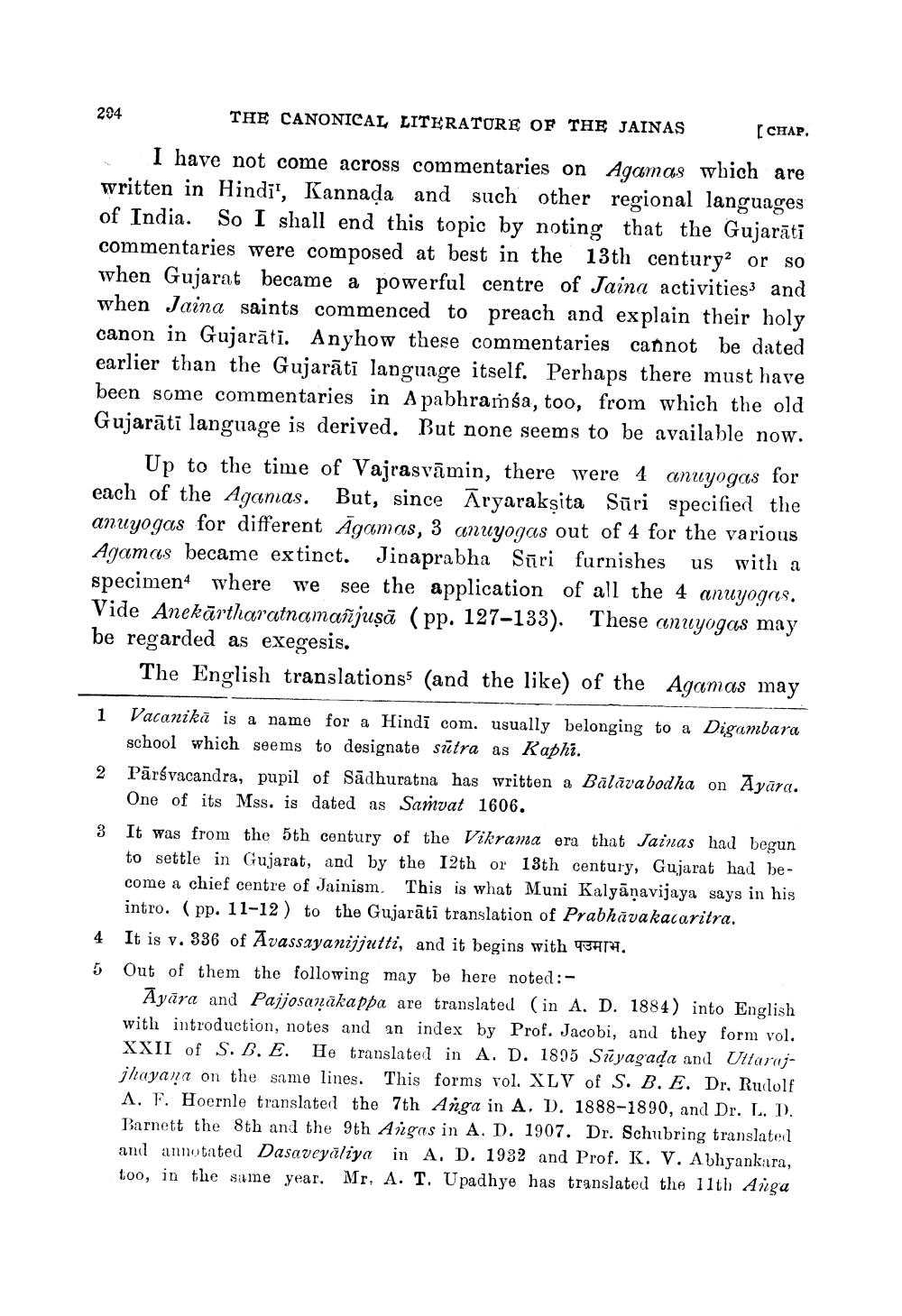________________
204
THE CANONICAL LITERATURE OF THE JAINAS
[CHAP.
I have not come across commentaries on Agamas which are written in Hindi', Kannada and such other regional languages of India. So I shall end this topic by noting that the Gujarāti commentaries were composed at best in the 13th century2 or so when Gujarat became a powerful centre of Jaina activities and when Jaina saints commenced to preach and explain their holy canon in Gujarāti. Anyhow these commentaries cannot be dated earlier than the Gujarāti language itself. Perhaps there must have been some commentaries in A pabhramsa, too, from which the old Gujarāti language is derived. But none seems to be available now.
Up to the time of Vajrasvāmin, there were 4 anuyogas for each of the Agamas. But, since Aryarakṣita Sūri specified the anuyogas for different Agamas, 3 anuyogas out of 4 for the various Agamas became extinct. Jinaprabha Sūri furnishes us with a specimen4 where we see the application of all the 4 anuyogas. Vide Anekārtharatnamañjuşā (pp. 127-133). These anuyogas may be regarded as exegesis.
The English translations (and the like) of the Agamas may
1
2
3
4 5
Vacanikā is a name for a Hindi com. usually belonging to a Digambara school which seems to designate sutra as Kaphi. Pārsvacandra, pupil of Sādhuratna has written a Bālāvabodha on Ayāra. One of its Mss. is dated as Samvat 1606. It was from the 5th century of the Vikrama era that Jainas had begun to settle in Gujarat, and by the 12th or 13th century, Gujarat had become a chief centre of Jainism. This is what Muni Kalyānavijaya says in his intro. (pp. 11-12) to the Gujarāti translation of Prabhāvakacaritra. It is v. 336 of Avassayanijjutti, and it begins with 45414. Out of them the following may be here noted:
Ayāra and Pajjosanäkappa are translated (in A. D. 1884) into English with introduction, notes and an index by Prof. Jacobi, and they form vol. XXII of S. B. E. He translated in A. D. 1895 Süyagada and Uttarajjhayana on the same lines. This forms vol. XLV of S. B. E. Dr. Rudolf A. F. Hoernle translated the 7th Anga in A. D. 1888-1890, and Dr. L. D. Barnett the 8th and the 9th Aigas in A. D. 1907. Dr. Schubring translated and annotated Dasaveyāliya in A. D. 1932 and Prof. K. V. Abhyankara, too, in the same year. Mr. A. T. Upadhye has translated the 11th Anga




